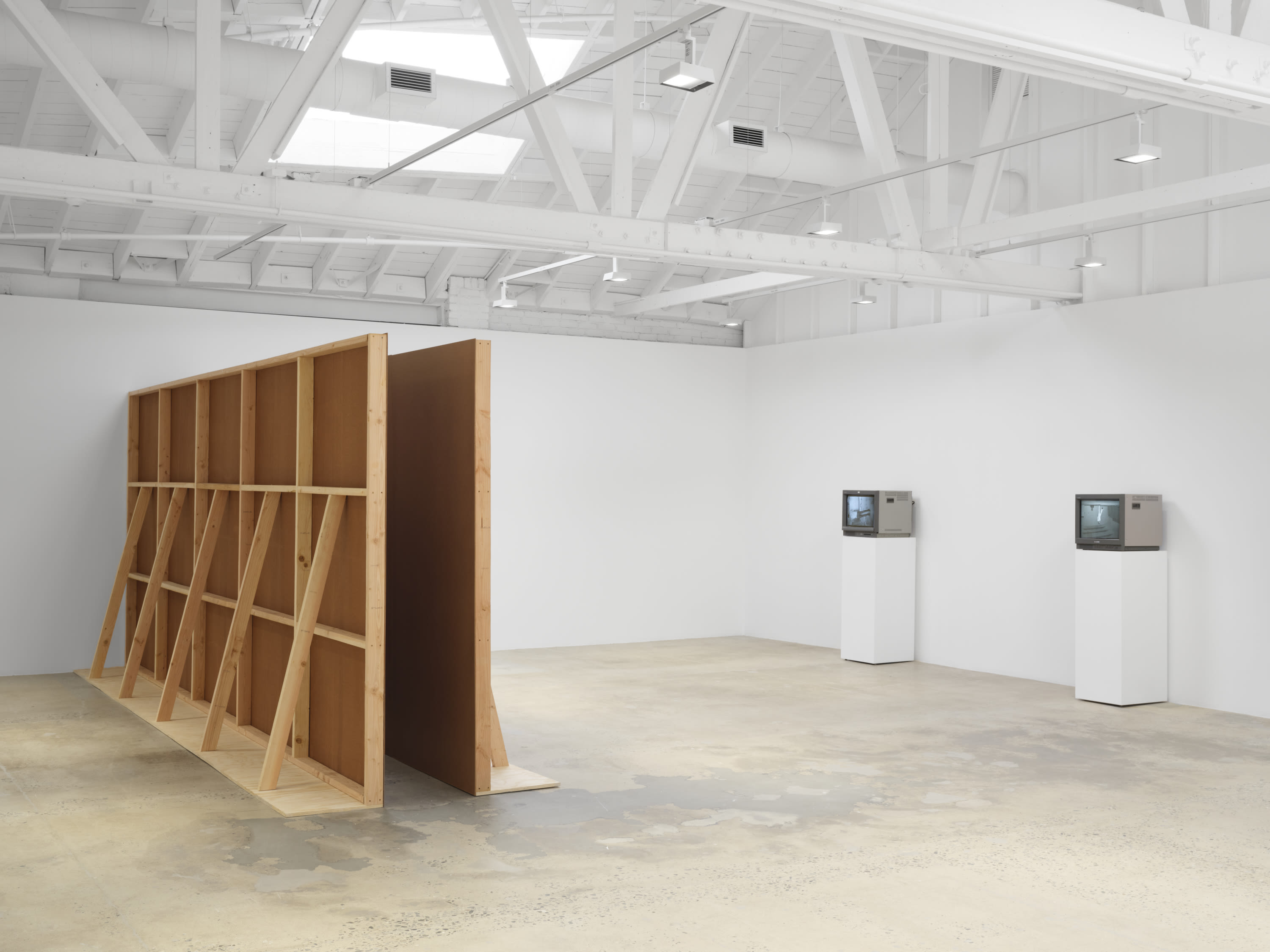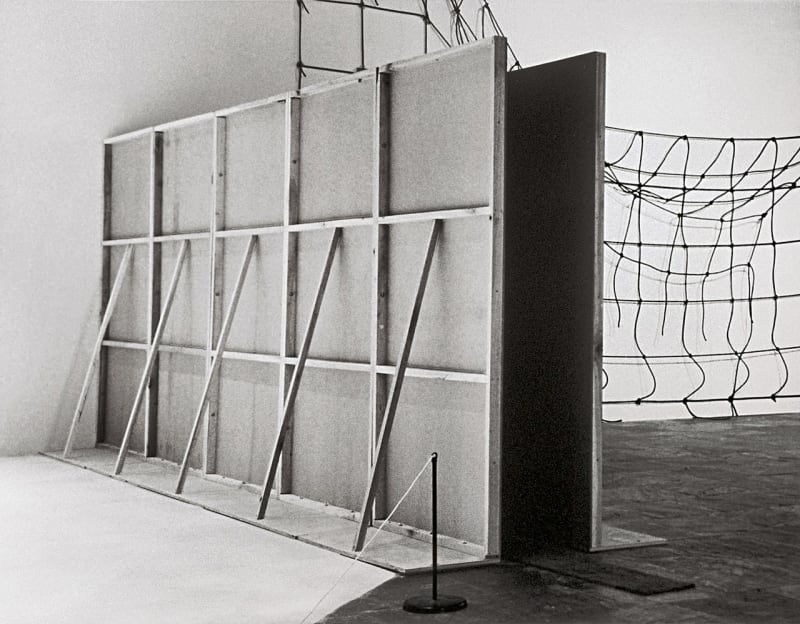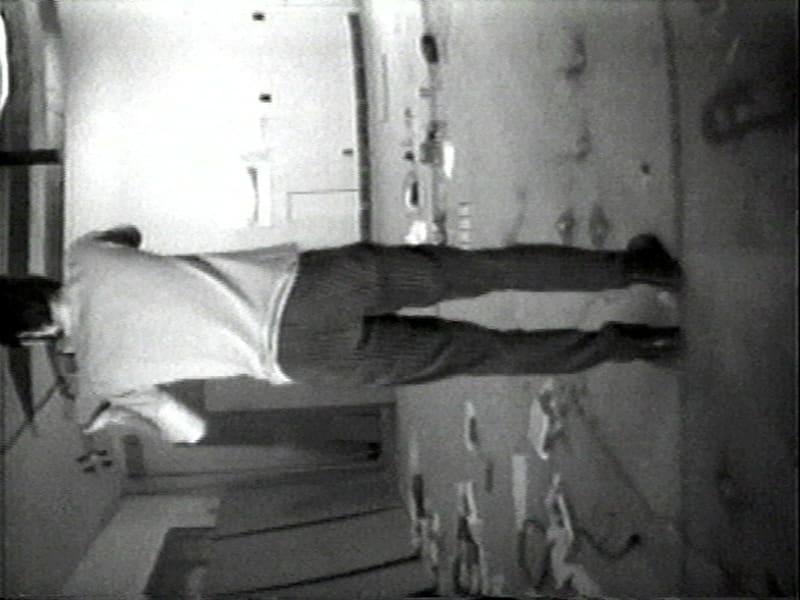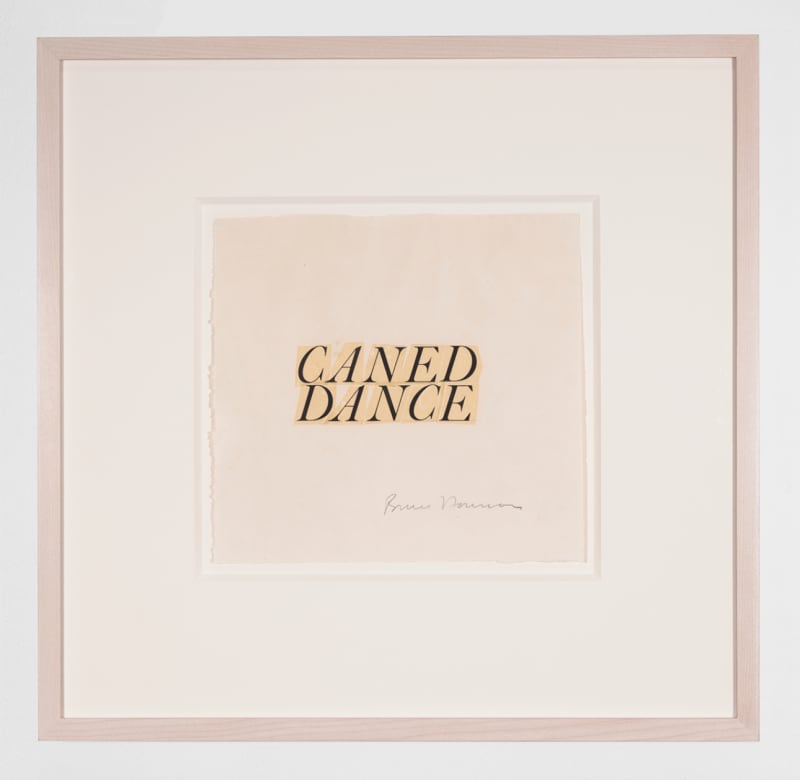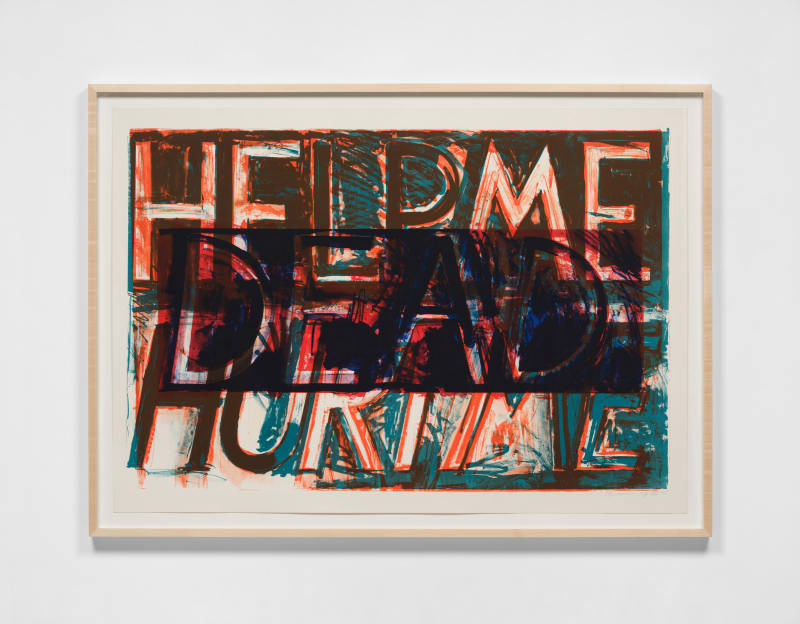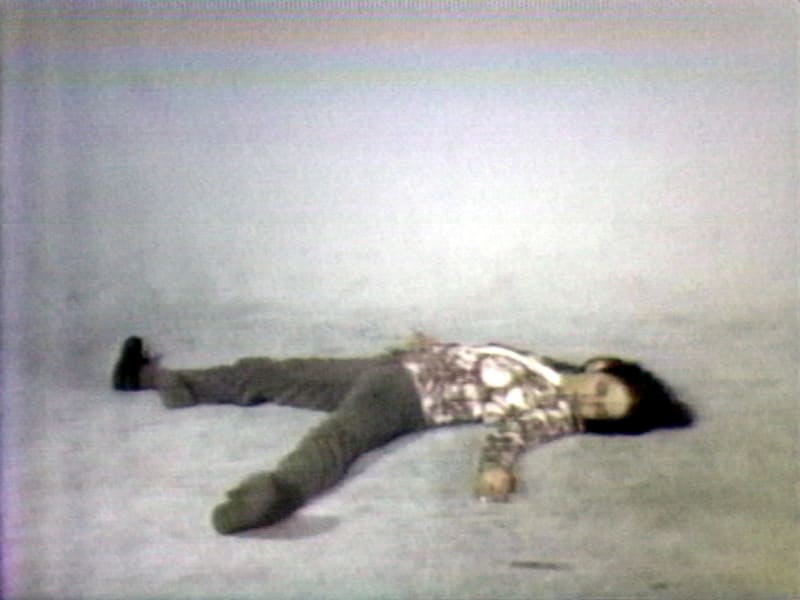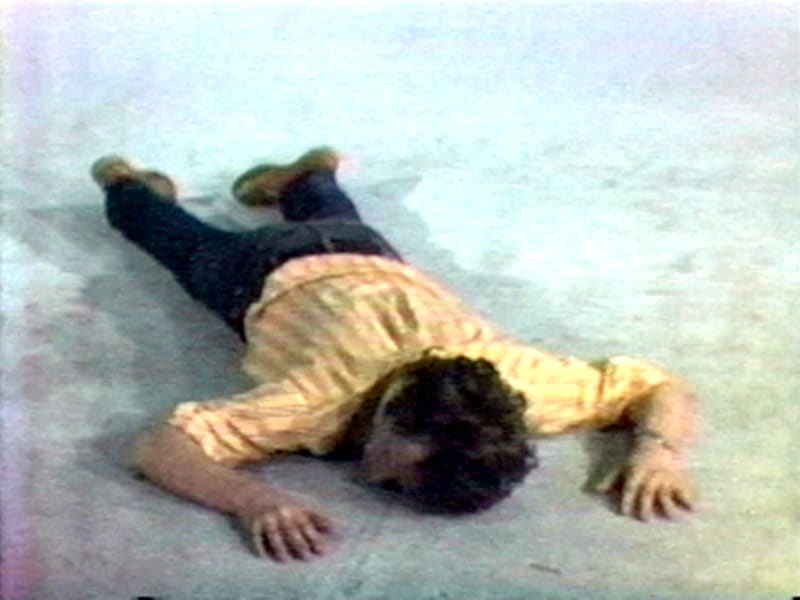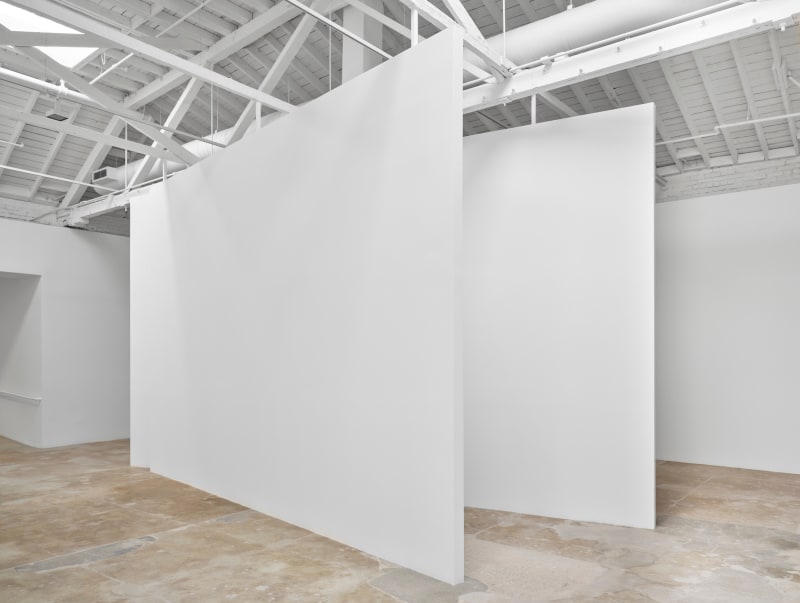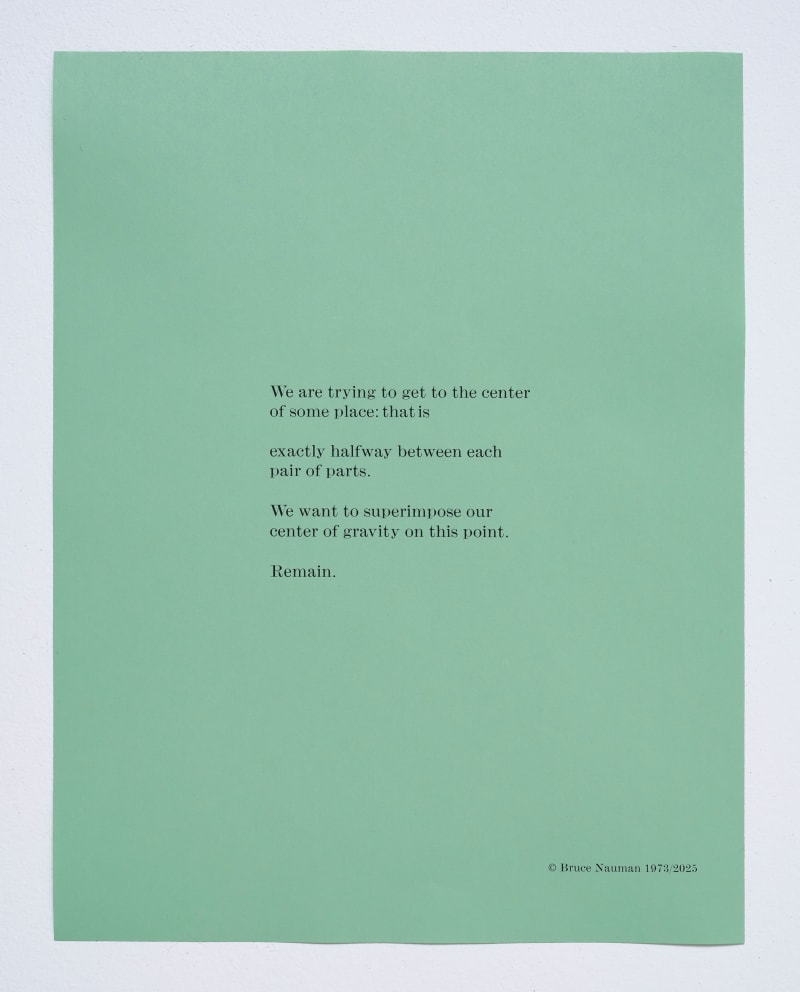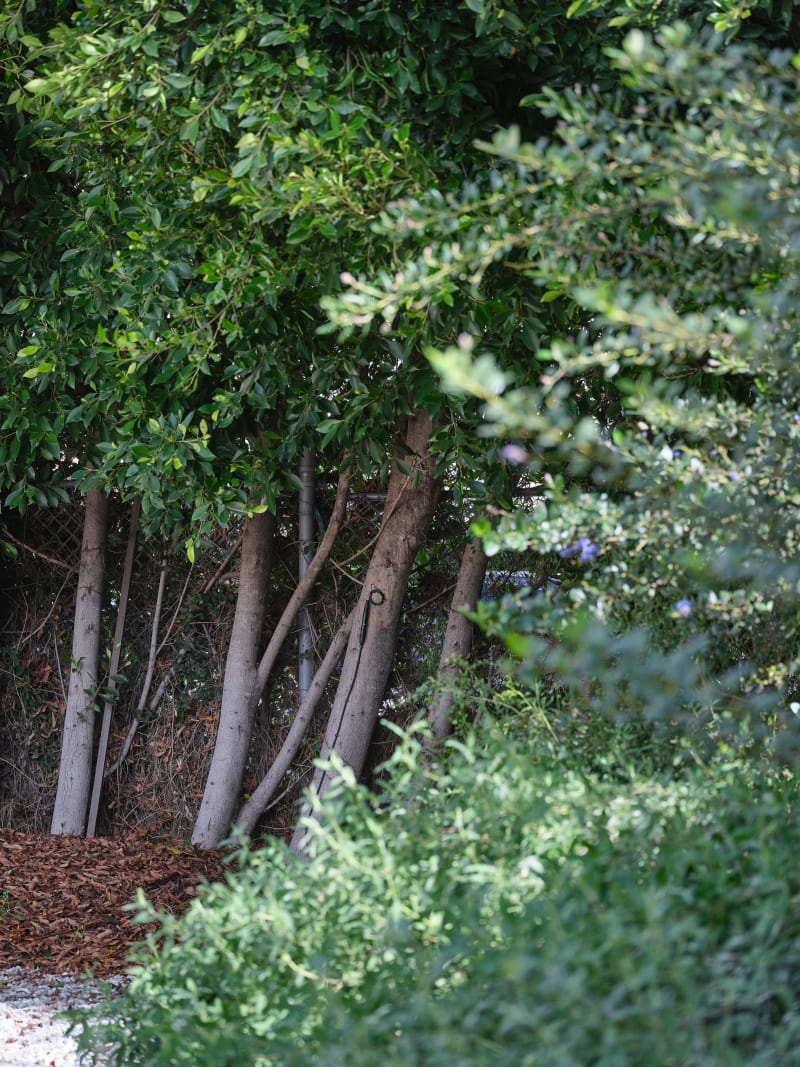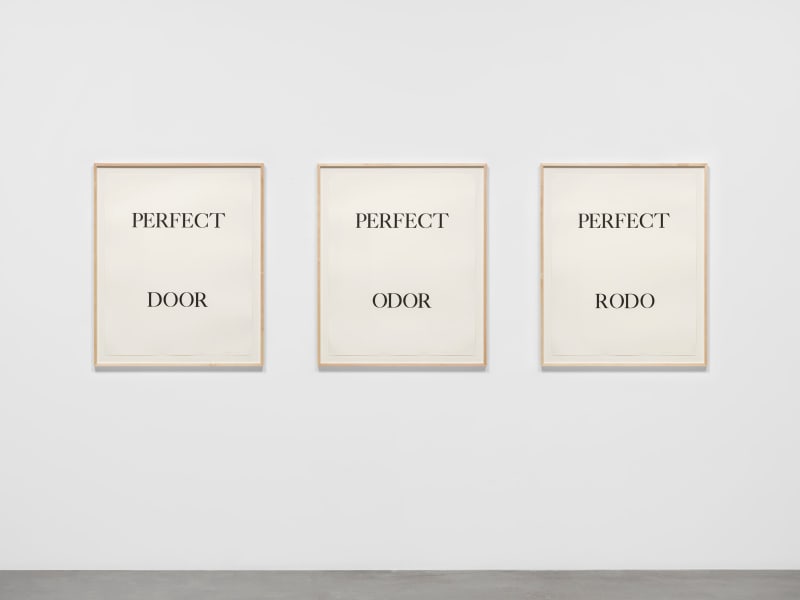Bruce Nauman : Pasadena Years
Bruce Nauman
Pasadena Years
1120 Seward Street Los Angeles | 19 February - 3 May 2025Marian Goodman Gallery is pleased to present our first solo exhibition with Bruce Nauman. Pasadena Years is a historical reflection on the prolific decade that established one of the most important contemporary artists of our time. The exhibition emphasizes the radical foundation of Nauman’s practice while he lived in Los Angeles between 1969-79. Across the entire gallery and garden, works on view include sculptures, installations, sound works, videos, works on paper, and editions. Pasadena Years notably marks Nauman’s first exhibition in Los Angeles in over 30 years and includes Text for a Room, 1973-2025, a work that the artist recreated for the first time since its debut at his earliest retrospective, which originated at the Los Angeles County Museum of Art (LACMA) in 1972.
In 1969, Bruce arrived in Los Angeles at the age of 27 with his wife and son. Following his MFA from the University of California, Davis, and an NEA grant in Southhampton, New York, he subsequently relocated to Los Angeles for his small but notable community based there: his parents, his dealer, Nicholas Wilder, and his friends—Walter Hopps, Edward Kienholz, and Richard Jackson. He and his family lived for eight years in Hopps’s Pasadena house along with Jackson before moving to nearby Altadena. In 1972, Nauman was the subject of a retrospective coorganized by LACMA and the Whitney Museum of American Art, which thereafter traveled extensively through Europe. As Jane Livingston, the LACMA curator who co-organized the retrospective with Marcia Tucker, described in 1972: “[Bruce] is not only ahead of his audience but ahead of himself.”
The 1960s in Southern California was an important period for conceptual art. The Ferus Gallery (1957-66), founded by Hopps and Kienholz, was largely focused on avant-garde work from the West Coast. In 1962, Hopps became the curator of the Pasadena Museum of Art, famously opening the first U.S. exhibition of Marcel Duchamp shortly thereafter. LACMA opened to the public three years later, in 1965. Within this decade, Light and Space, Finish Fetish, California pop art and assemblage movements had all simultaneously emerged. In 1966, while based in Northern California, Nauman had his first commercial solo exhibition at Nicholas Wilder Gallery (located up the block from Ferus), which contextualized him with the emergence of West Coast conceptualism. This development would help pave the way for a coming decade that would bring Nauman into relationships with other prominent LA-based artists such as Larry Bell, Vija Celmins, Maria Nordman, and Ed Ruscha.
This exhibition opens with works from 1968-69, highlighting a time when Nauman gained exposure in several significant group shows across Europe, including documenta (1968), When Attitudes Become Form (1969), and Anti-Illusion (1969). Performance Corridor, 1969, on loan from the Panza Collection of the Solomon R. Guggenheim Museum, marks a crucial transformation in Nauman’s practice that focused on phenomenological explorations in space. Initially used by the artist as a set for a video piece, it was later exhibited in Anti-Illusion as an autonomous sculpture with a narrow walkway and dead end that leads viewers to imagine the physical constraints of engaging the object. This gesture would open up his practice to an era of thinking through a wide variety of room-sized and corridor-like structures that relate to the body, space, movement, and light. On one side of the Performance Corridor, rare performance instructions from 1968 are on view.
In dialogue with Performance Corridor, just across the gallery, is a selection of videos that grew out of Nauman’s activities in his studio. Revolving Upside Down, 1969, and Violin Tuned D.E.A.D., 1969, were both made in Pasadena and represent the breadth of his simple and persistent, action-as-material performances for video. Nauman, in his own words, considers these works an answer to “the fundamental question of what an artist does when left alone in the studio. My conclusion was that [if ] I was an artist and I was in the studio, then whatever I was doing in the studio must be art. At this point art became more of an activity and less of a product.”
On view in the garden, Dark (1968) is a 4’ x 4’ x 4” solid steel slab with the work “dark” written on the bottom. In 1968, Nauman proposed Dark to the Southwestern College of Chula Vista, CA Purchase Award Exhibition, and subsequently won. Once the acquisition was announced, students and faculty responded in outrage to the use of school funds for such an austere work, which led John Baldessari, an art faculty member at the time, to defend the work in a public lecture. A minimal tombstone meant to be displayed outdoors, the piece was included in Nauman’s 1972-74 retrospective tour throughout the United States and Europe, and recalls other other straightforward works by the artist that mentally confront viewers with the imaginative, abyssmal space of the elsewhere. Nearby, for Microphone/Tree Piece (1971), originally conceived for legendary Los Angeles art patrons Stanley and Elyse Grinstein, Nauman discreetly places a microphone into a pre-drilled hole upon a tree and amplifies the sound of the tree growing into the neighboring, interior lobby space of the gallery.
A gallery dedicated to Nauman’s text-based works presents early examples of his conceptual practice with linguistic play, propositions, and puns. During this period, Nauman began concurrently creating editions with Marian Goodman through her former art publishing company, Multiples, Inc. The two worked together on several works, including one on view: the artist book LAAir (1970), featuring spreads of color photographs the artist took of the city’s smog. In addition, a selection of his rare presstypes are on view, along with additional prints made with Gemini G.E.L. and Cirrus.
The Main Gallery is transformed into a rigid architectural setting that consists of two large works: Funnel Piece (Françoise Lambert Installation), 1971, and Text for a Room, 1973-2025.
Nauman originally designed Funnel Piece to physically wedge and occupy the entirety of a pre-existing room of a gallery in Milan. The floating walls are a variation on his corridor works that look at human physiology and how it shapes our perception of space. Text for a Room, recreated for the first time since its 1973 debut, includes a sheet of performance instructions at its narrow entryway; the viewer enters, prepared to execute an action, but is unaware of what will be encountered. The sensation echoes what Nauman would later reflect on in 1980: “the feeling that I had about a lot of that work was going up the stairs in the dark and either having an extra stair that you didn’t expect or not having one that you thought was going to be there—that kind of misstep that surprises you every time it happens.”
This exhibition was organized by Philipp Kaiser with Samantha Gregg of Marian Goodman Gallery, and in close collaboration with Bruce Nauman and his studio.
Nauman has been the focus of over 250 solo exhibitions, most recently at Tai Kwun Contemporary, Hong Kong (2024); SITE Santa Fe, NM (2023); and Palazzo Grassi – Punta della Dogana, Venice (2021-22). Recent retrospectives include those at Pirelli HangarBicocca, Milan (2022-23) and M Woods, Beijing (2022). An eponymous survey at Tate (2020) traveled to the Stedelijk Museum, Amsterdam (2021), while Bruce Nauman: Disappearing Acts, a comprehensive retrospective, made its debut at Schaulager, Basel (2018) and then traveled to The Museum of Modern Art, New York and MoMA P.S.1 (201819). Notable awards include the Praemium Imperiale (2004) and the Frederick Kiesler Prize (2014) and the Golden Lion at the Venice Biennale (2009 and (1999).
Press Contact
Linda Pellegrini, Head of Communications and Events
linda@mariangoodman.com, +1 (212) 977 7160
